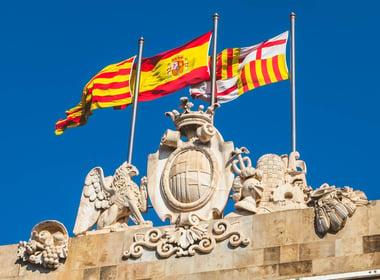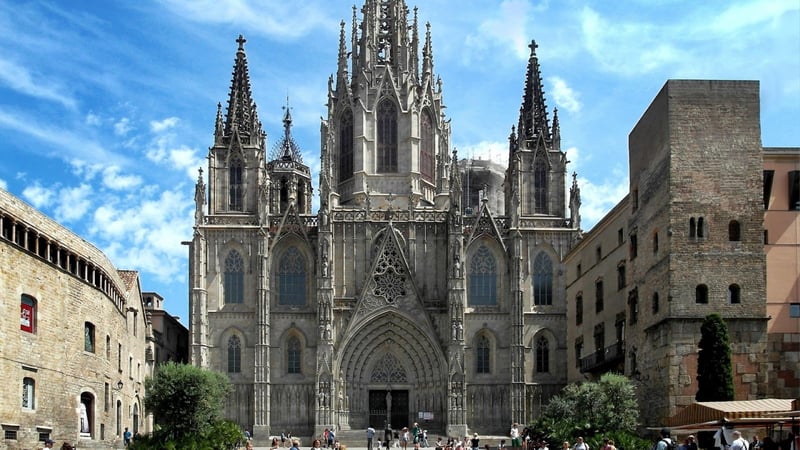İçindekiler
I think one of the most delightful aspects of Barcelona is how magnificent buildings suddenly appear before you while walking through side streets. The Barcelona Cathedral is just one of these – officially named the Cathedral of the Holy Cross and Saint Eulalia, it’s not just a place of worship, but also a monument that has witnessed 600 years of the city’s history. In this article, I’ll tell you about this magnificent structure that holds a different story in each of its corners.
History of Barcelona Cathedral
The cathedral’s story actually dates back much further than the structure we see today. On the site of today’s cathedral, there was a basilica from the early Christian period in the 4th century and another church built in Visigothic style in the 6th century. However, the foundations of the Gothic structure that stands before us today were laid in 1298.
Taking 150 years to complete, the cathedral was shaped by the most talented architects and craftsmen of the period. The most interesting aspect is that despite being influenced by different architectural movements during its construction, it never lost its Gothic style. Because of this, it’s considered one of Barcelona’s purest Gothic structures.

The Story of Saint Eulalia
One of the most important features of the cathedral is that it is dedicated to Eulalia, the patron saint of Barcelona. According to legend, 13-year-old Eulalia was martyred for the Christian faith during the Roman Empire. The marble sarcophagus in the cathedral’s crypt protects the saint’s remains.
Architectural Features of the Cathedral
The first thing you’ll likely notice on the cathedral’s exterior is its pointed towers reaching toward the sky. The rose window above the main entrance is one of the finest examples of medieval Gothic art. The atmosphere created by light filtering through this window into the interior, especially during sunset, is worth seeing.
The interior consists of three sections including the side naves. The main nave, at 28 meters high, showcases the architectural achievement of the period. Each of the chapels lined along the side naves is a work of art in its own right.

Cathedral Courtyard
Perhaps the most surprising feature of the cathedral is the courtyard and the 13 geese that live there. This tradition dates back to the 15th century. Each goose symbolizes how old Saint Eulalia was when she was martyred. The fountain and orange trees in the middle of the courtyard provide a peaceful environment for visitors.
Barcelona Cathedral today
Today, the cathedral serves as both an important religious center and a tourist attraction. Every year, millions of visitors come to Barcelona to see this Gothic masterpiece. Watching the city’s panoramic view from the roof terrace is particularly an unforgettable experience.
The cathedral is still actively used and regular services are held. Every Sunday, you’re very likely to encounter Sardana, the traditional Catalan dance performed in the square in front of the cathedral.

Cathedral Visiting Tips
For those wanting to visit Barcelona Cathedral, the ideal time is morning hours, especially weekday mornings, when it’s possible to explore the building away from crowds. You need to buy an extra ticket to access the roof terrace, but it’s definitely worth it for the view. Additionally, the evening illumination gives the cathedral a completely different appearance.
Barcelona Cathedral is not just a religious building, but also a unique treasure reflecting the city’s history, culture, and art. I’d definitely recommend adding this magnificent structure to your itinerary – I discover a different detail with each visit.
Cathedral of Barcelona
Website
https://catedralbcn.org
Visiting Hours
Weekdays: 08:30 / 18:30
Weekends: 08:30 / 18:30
Address
Pla de la Seu, s/n, Ciutat Vella, 08002 Barcelona








